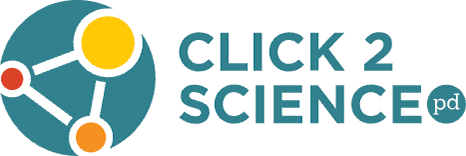Developing an Identity – Science and Skateboarding

In a previous webinar about Developing STEM Identities in youth, we highlighted the work of Dr. Bill Robertson, otherwise known as @drskateboard. Dr. Robertson teaches about speed, velocity and momentum at local skate parks through Action Science. If you missed the webinar – you can find the recording among our list of Click2Science On-Demand Webinars.
Identity is Not Just for Teens
We think of teen years as the time when students develop their identity, but it actually begins to happen much earlier. Identify is important in learning. If a student doesn’t think a person like him/her is successful in school, or in STEM, that perception becomes a barrier. Afterschool is a great place for students to develop their STEM identity. Ideally, it is a student-centered time when learners feel a strong sense of ownership in what they are doing.
Here are three fundamental experiences we can provide in afterschool programs to help youth develop strong STEM identities:
1-Get them involved in STEM topics and professions – to meet people who work in this area, participate in citizenship science projects or service learning
2-Develop their sense of competence and confidence by providing opportunities in engage in STEM practices, to solve problems, to answer their own questions by experimenting, collecting and analyzing data
3-See themselves as contributors and participants in STEM
Do you do these things already? Here are some great suggestions by participants in the webinar. Megan agreed it is really important for students to see themselves as contributors to STEM. She said, “I heard a study about how effective it was to actively point out that discoveries are being made everyday. Kids may feel that everything in science has already been discovered and written in their textbook. It’s motivating to hear frequently – we need YOU to help us figure out what’s next, what needs to be improved.” Cathy pointed out that it is empowering when students take ownership of the learning process; Denise added it can help boost their self-esteem; and Jamila said it helps develop problem solving and critical thinking skills.
Making it Happen
Knowing it makes a difference in the lives of the students you work with is important, but it doesn’t really help us understand how to make it happen. Don’t lose heart, programs like Project Exploration in Chicago and TechBridge in San Francisco and Seattle are making a difference and you can too.
Dr. Robertson uses his passion for skateboarding to fuel the passion of students about physics. If you haven’t watched it, take a moment to check out the video. Your passion may be different, but use it, and the passions of your students to make connections to STEM. Your excitement and passion will rub off on your students to keep them engaged and make learning meaningful.
1-Get to know the students in your program – recognize their interests
2-Plan how to integrate their interests into STEM experiences. If you can, use the expertise of the teachers in your school to help plan meaningful experiences.
3-Emphasize STEM practices and processes. Don’t focus on products, but on processes. Dr. Skateboard notes that scientists and skateboarders have similar processes of using experimentation to produce a result that is predictable and replicable.
4-Take time and have fun with it. Just like skateboarding, mastering STEM takes time and lots of practice. Making it fun will help keep everyone engaged.
The participants in the webinar had some great ideas to share as well. Marlena pointed out that STEM can be applied to many different passions, interests, and careers. There are many ways to help students connect. Melissa uses fashion design and textile science to make STEM connections. Megan has students create their own videos and selfies. Darryl has science Wednesdays in his program that feature videos and activities from Bill Nye. Nina uses engineering, science and technology activities from NASA. Other resources shared on the webinar include SciGirls from PBS, and Engineer Girl, Engineer Your Life, or Discover Engineering as places to find engineering role models, videos, and activities. Science Buddies and the Science of Everyday Life were recommended for finding science role models and activities.
Be intentional about Engaging all Students
It is important to be intentional about engaging all students in STEM. Research has shown that experiences of individuals differ – especially by race and gender, but late elementary and middle school years are a crucial period for STEM identity for all young people. It is important to recognize and address the differences in experiences of minority youth and girls.
Here is a great project from Megan that you can use to bring all this together. She has scientists or engineers come visit with her students. You can also find role models on line to share with your students. She creates role model cards for her students that highlight what these scientists do, their education and why they love their work. Then she has her students use technology to create their own role model cards – for themselves – what they plan to do, where they plan to go to school, and what they will accomplish. Finally she adds a powerful hash tag like #STEM4girls that encourages them to be the role models. We invite you to share the powerful STEM identities of your students with us using #MomentsThatClick.
